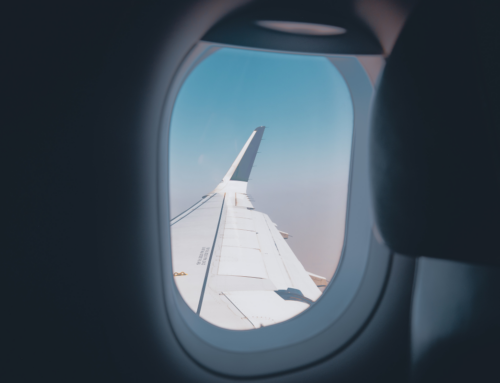Earlier this year ch-aviation teamed up with Collateral Verifications to provide aircraft valuation data for ch-aviation fleets ownership subscribers. With the latest update, we analysed the trends of aircraft value data by aircraft type.
“Collateral Verifications” valuation methodology and approach during covid-10 crisis for market values:
1. During the initial period of this crisis, it has been and will be difficult to ascertain the current value trends based on the lack of available transaction data points to review for both new and used aircraft. It is also our understanding that many of the transactions taking place had already been in work prior to the crisis and may not be reflective of the current market conditions.
2. In order to capture some of the aircraft valuation trends, there are factors that can be analysed to provide certain indications of the potential value declines for each aircraft type.
a. Pricing adjustments for aircraft listed as available for sale and/or lease
b. Airline Credit Risk
c. Monthly Lease Rate Changes
d. Residual Value Adjustments
3. As many financial institutions and investors use these factors to determine the overall lease-encumbered value of an aircraft, these can also be used as indicators to determine the potential adjustments to aircraft values in the current environment.
4. As more trading data becomes available, these value trends will continue to be verified and adjusted as needed to ensure that our values reflect the current market conditions.
At least, there’s a trend of recovery instead of further groundings.
Current Market Value Trends
We see that the average aircraft monitored by Collateral Verifications saw an 11% value reduction since the beginning of 2020. This is a significant drop in aircraft values during this unprecedented crisis for the industry. We saw up to 59% of the total commercial aircraft being grounded during the peak of this pandemic at the end of April.
We looked at what aircraft types and build years had the highest adjustments in values. Values of these aircraft reduced the most post-covid19 compared pre-crisis and the current levels. These aircraft types lost a quarter of their value since the beginning of 2020:
| Manufacturer | Model | Post Crisis Adjustment |
| Boeing | 717-200 | Up to -32% |
| Boeing | 737-300 | Up to -25% |
| Boeing | 737-400 | Up to -25% |
| Boeing | 737-500 | Up to -26% |
| Boeing | 737-800 | Up to -27% |
| Boeing | 737-900 | Up to -30% |
| Boeing | 767-300(ER) | Up to -27% |
| Airbus | A320-200 | Up to -30% |
| Airbus | A330-300 | Up to -29% |
| Airbus | A380-800 | Up to -27% |
We grouped the aircraft types and checked types that lost 15% or more of their value and compared to aircraft groundings during the pandemic based on ch-aviation fleets advanced data:
| Model | Build Year | Avg. Value adjustment | No of aircraft in the market | % grounded |
| 717-200 | 1999-2006 | -32% | 142 | 52% |
| 737-500 | 1989-1999 | -26% | 151 | 62% |
| 737-400 | 1989-1999 | -25% | 140 | 77% |
| 737-300 | 1984-1999 | -24% | 214 | 70% |
| 737-900 | 2001-2008 | -22% | 52 | 62% |
| A330-300 | 1993-2020 | -22% | 680 | 52% |
| A380-800 | 2007-2019 | -22% | 230 | 98% |
| 737-800 | 1998-2019 | -18% | 4823 | 49% |
| 777-300(ER) | 2007-2020 | -18% | 812 | 30% |
| A319-100 | 1996-2019 | -18% | 1217 | 58% |
| ERJ-135LR/ER | 1999-2008 | -18% | 89 | 55% |
| 767-300(ER) | 1986-2013 | -17% | 341 | 65% |
| 777-300 | 1997-2006 | -17% | 51 | 66% |
| A320-200 | 1994-2020 | -16% | 4126 | 64% |
The Boeing 717-200 is the most affected type, losing almost one-third of its value during this crisis.
Boeing 737 Classics also lost a significant part of their values. B737-300s, B737-400s and B737-500s lost about quarter of their value.
Boeing 737NGs also made the list. Boeing 737-800s lost 18% of value during the pandemic, but the valuation dropped differently by the age of aircraft. Early builds of Boeing 737-800s manufactured from 1998 to 2000 lost about 27% of their value, while new builds (2016 and beyond) lost only about 12%. Boeing 737-900s lost 22% of average value while newer Boeing 737-900(ER)s lost 15%. Looking at the values on a timeline, we see older aircraft losing more compared to the latest builds of 737-900ER – a similar trend as its smaller brother, the 737-800.
Airbus A380-800s lost 22% on average, with late builds losing more than early builds (in %). The 380 as an aircraft type lost the most in absolute numbers (millions of dollars).
Similar trends apply to B767-300(ER)s, where aircraft manufactured from 1986 to 1996 lost 27% while builds in 2008-2009 lost just 5.5% of value.
Airbus A320 family values differ based on the equipment type. A319s lost 18% of their value, while A320s lost 17% and A321s lost 14% on average. What do A319s and A320s have in common? The oldest and youngest aircraft lost less, while aircraft produced between 2005 and 2015 lost the most. Looking at Airbus A321s, older manufactured units lost more value while newer ones lost less.
Boeing 777-300s saw a 17% reduction in values, while its younger brother, the 777-300(ER), lost even more – 18%. Looking at the values of 777-300(ER) we see aircraft built 2003-2004 and 2013-2016 lost more than 20% while aircraft manufactured in other periods lost less.
ERJ-135 values decreased by 18%. Older builds lost more while the very latest manufactured units in 2008 lost just 9% of their value.
We also looked at the brand-new aircraft list. Aircraft of these types lost 10% or more when manufactured in 2020:
| Manufacturer | Equip Type | Post Crisis Adjustment |
| Airbus | A380-800 | -24% |
| Bombardier | CRJ-900ER | -13% |
| Boeing | 777-300(ER) | -13% |
| Airbus | A330-300 | -11% |
| Airbus | A330-200 | -11% |
| Embraer | Embraer 190E2 | -10% |
| Embraer | Embraer 195E2 | -10% |
| Airbus | A220-100 | -10% |
| Airbus | A220-300 | -10% |
Did all aircraft types lose value during covid-19? No!
The following aircraft types received positive adjustment in the post-covid19 world:
| Manufacturer | Equip Type | Build Year | Post Crisis % Adj. |
| Boeing | 747-8F | 2020 | +13,6% |
| Boeing | 767-300F | 2012-2018 | +10,1% |
| Boeing | 747-8F | 2018-2019 | +6,5% |
| Boeing | 767-300F | 2009-2011 | +6,5% |
| Boeing | 747-8F | 2017 | +5,4% |
| Boeing | 767-300F | 2008 | +4,2% |
| Boeing | 747-8F | 2016 | +3,1% |
| Boeing | 737-300F | 1984-1999 | +2,9% |
| Boeing | 737-400F | 1988-1999 | +2,9% |
| Boeing | 747-8F | 2015 | +2,1% |
| Boeing | 747-8F | 2014 | +1,0% |
| Airbus | A330-200F | 2020 | +0,5% |
| Boeing | 777-200F | 2020 | +0,5% |
What do these types have in common? They all have an F in the end, which means it is designed to carry freight, not passengers.
ch-aviation fleets ownership subscribers have instant access to aircraft valuation data with current market values and market lease rates provided tail by tail for a wide range of commercial aircraft from 30-seat turboprops to the Airbus A380. ch-aviation also provides total values of the owned fleet for airlines or total value of lessor portfolios.



